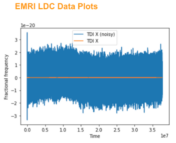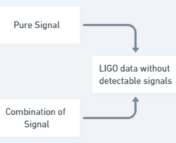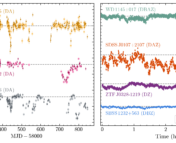The Undergraduate Research series is where we feature the research that you’re doing. If you are an undergraduate that took part in an REU or similar astro research project and would like to share this on Astrobites, please check out our submission page for more details. We would also love to hear about your more general research experience!
Pranav Satheesh
Indian Institute of Technology Madras
This post was written by Pranav Satheesh, a fourth-year undergraduate student of the Integrated Bachelors and Masters degree in Physics at Indian Institute of Technology Madras. Pranav did this work under Prof. Prasenjit Saha from the University of Zurich and the project was presented at the 237th AAS meeting.
LISA (Laser Interferometer Space Antenna) is the upcoming space-based gravitational wave observatory expected to launch by 2034. Gravitational waves are ripples in the fabric of spacetime caused by the acceleration of massive objects. LISA will consist of three spacecraft placed in a triangular configuration. This set-up will follow Earth in its orbit around the Sun. Like LIGO, LISA uses laser interferometry to measure the gravitational wave strain (how much the gravitational wave stretches and compresses space as it moves). While LIGO operates on 10 Hz to 10 kHz frequency range, LISA can observe gravitational waves in the 0.1 mHz to 1 Hz frequency range. We expect to observe gravitational waves associated with interesting astrophysical sources otherwise not observed on LIGO’s frequency band at lower frequencies. Among these are a handful of known galactic compact binaries called ‘verification binaries’ . These binaries are well known from electromagnetic observations and are a guaranteed LISA source and are crucial in the instrument’s initial functional tests.
Gravitational waves have two polarisation modes, the plus and cross polarisations. The characteristic strain associated with both the polarisation does depend on the orbital parameters and the orientation of the instrument. To calculate the characteristic strain accurately, we need an accurate measurement of the inclination (how much the orbit is tilted), period and the polarisation angle. The polarisation angle depends on the orientation of the binary orbit. Currently we have measurements of the parameters for the gravitational wave frequency and amplitude, but the orientation angle needs to be resolved for a full polarisation prediction. We propose a method to calculate the orientation angle using spectropolarimetry. The basic idea is that the optical polarisation angle shows periodic changes linked to the orbital motion. Studying this, we can fit for the binary orientation and orbit inclination. We find that the most promising candidate for this observation is the binary HP Librae. We have calculated the errors associated with the plus and cross polarisation strains with the orientation angle. Further steps include measurement of this binary’s orientation angle using the method.

Astrobite edited by: Haley Wahl
Featured image credit: Pranav Satheesh




